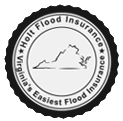An Elevation Certificate is a form showing the elevation of a building’s lowest floor relative to the height water would reach in a serious (1 percent annual chance or “100-year”) flood. The certificate is used to show compliance with community floodplain management ordinances and to determine the proper flood insurance premium rate.
Your client mostly likely will need an Elevation Certificate if the building is located in a high-risk flood zone (Special Flood Hazard Area) and you are writing a new policy. In the past, only homes built after the community's initial Flood Insurance Rate Map was put in place (post-FIRM construction) required Elevation Certificates in high-risk areas. But a new law makes an Elevation Certificate necessary for many pre-FIRM buildings as well. So, first determine if the building is pre-FIRM or post-FIRM, and determine how the policyholder could be affected by the Biggert-Waters Flood Insurance Reform Act of 2012 before suggesting that your client obtain an Elevation Certificate. Keep in mind that if the lowest floor of the building is above the Base Flood Elevation, you may find that rating a pre-FIRM building using post-FIRM rates and data from an Elevation Certificate may result in a lower premium than using pre-FIRM rates.
Before instructing your client to hire a surveyor for an Elevation Certificate, check whether the community participates in the Community Rating System (CRS). Communities participating in the CRS are required to maintain a copy of Elevation Certificates for new construction or substantial improvement in high-risk flood areas made after the community joined the CRS. An additional resource for the Elevation Certificate is the building's previous owner.



